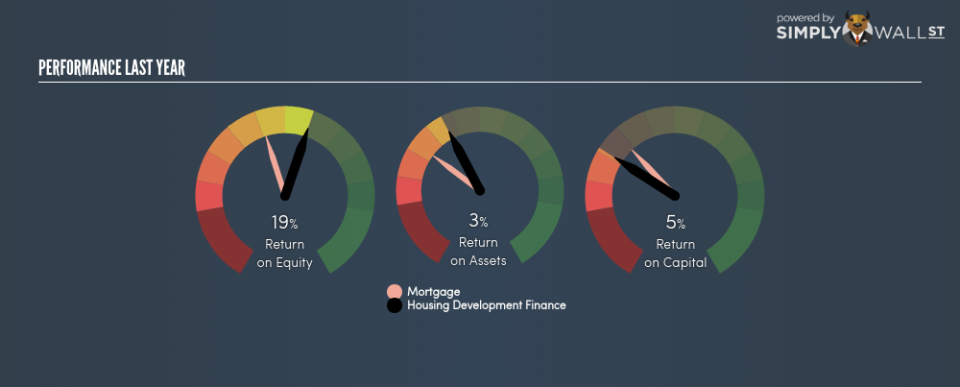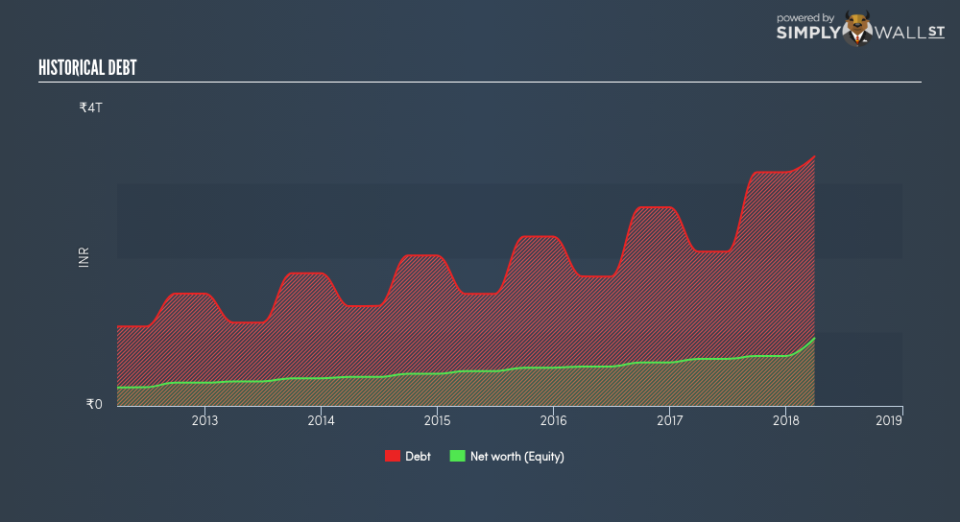Can Housing Development Finance Corporation Limited’s (NSE:HDFC) ROE Continue To Surpass The Industry Average?

I am writing today to help inform people who are new to the stock market and want to begin learning the link between Housing Development Finance Corporation Limited (NSE:HDFC)’s return fundamentals and stock market performance.
With an ROE of 19.00%, Housing Development Finance Corporation Limited (NSE:HDFC) outpaced its own industry which delivered a less exciting 13.15% over the past year. While the impressive ratio tells us that HDFC has made significant profits from little equity capital, ROE doesn’t tell us if HDFC has borrowed debt to make this happen. In this article, we’ll closely examine some factors like financial leverage to evaluate the sustainability of HDFC’s ROE. Check out our latest analysis for Housing Development Finance
Breaking down ROE — the mother of all ratios
Return on Equity (ROE) is a measure of Housing Development Finance’s profit relative to its shareholders’ equity. It essentially shows how much the company can generate in earnings given the amount of equity it has raised. While a higher ROE is preferred in most cases, there are several other factors we should consider before drawing any conclusions.
Return on Equity = Net Profit ÷ Shareholders Equity
ROE is assessed against cost of equity, which is measured using the Capital Asset Pricing Model (CAPM) – but let’s not dive into the details of that today. For now, let’s just look at the cost of equity number for Housing Development Finance, which is 13.55%. Given a positive discrepancy of 5.45% between return and cost, this indicates that Housing Development Finance pays less for its capital than what it generates in return, which is a sign of capital efficiency. ROE can be split up into three useful ratios: net profit margin, asset turnover, and financial leverage. This is called the Dupont Formula:
Dupont Formula
ROE = profit margin × asset turnover × financial leverage
ROE = (annual net profit ÷ sales) × (sales ÷ assets) × (assets ÷ shareholders’ equity)
ROE = annual net profit ÷ shareholders’ equity
Essentially, profit margin shows how much money the company makes after paying for all its expenses. The other component, asset turnover, illustrates how much revenue Housing Development Finance can make from its asset base. Finally, financial leverage will be our main focus today. It shows how much of assets are funded by equity and can show how sustainable the company’s capital structure is. Since financial leverage can artificially inflate ROE, we need to look at how much debt Housing Development Finance currently has. Currently the debt-to-equity ratio stands at more than 2.5 times, which means its above-average ROE is driven by significant debt levels.
Next Steps:
ROE is one of many ratios which meaningfully dissects financial statements, which illustrates the quality of a company. Housing Development Finance’s ROE is impressive relative to the industry average and also covers its cost of equity. Its high debt level means its strong ROE may be driven by debt funding which raises concerns over the sustainability of Housing Development Finance’s returns. ROE is a helpful signal, but it is definitely not sufficient on its own to make an investment decision.
For Housing Development Finance, I’ve compiled three fundamental factors you should further examine:
Financial Health: Does it have a healthy balance sheet? Take a look at our free balance sheet analysis with six simple checks on key factors like leverage and risk.
Valuation: What is Housing Development Finance worth today? Is the stock undervalued, even when its growth outlook is factored into its intrinsic value? The intrinsic value infographic in our free research report helps visualize whether Housing Development Finance is currently mispriced by the market.
Other High-Growth Alternatives : Are there other high-growth stocks you could be holding instead of Housing Development Finance? Explore our interactive list of stocks with large growth potential to get an idea of what else is out there you may be missing!
To help readers see pass the short term volatility of the financial market, we aim to bring you a long-term focused research analysis purely driven by fundamental data. Note that our analysis does not factor in the latest price sensitive company announcements.
The author is an independent contributor and at the time of publication had no position in the stocks mentioned.


